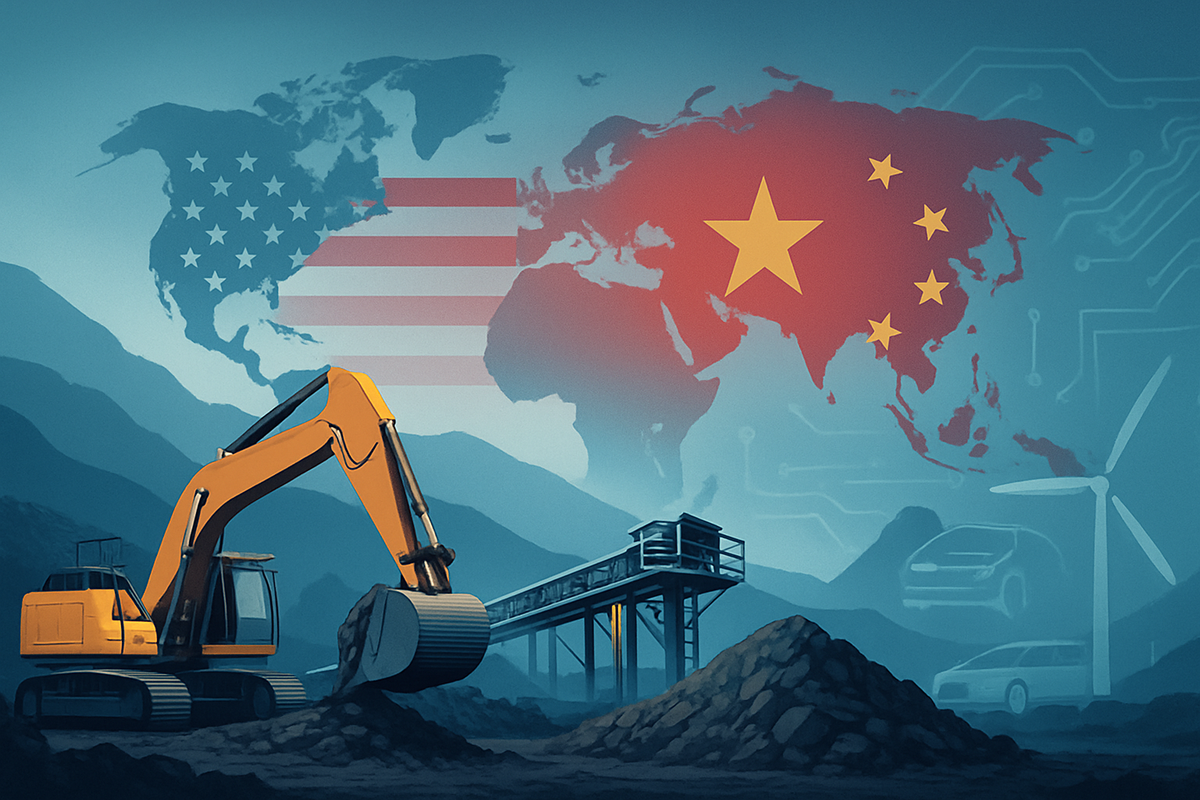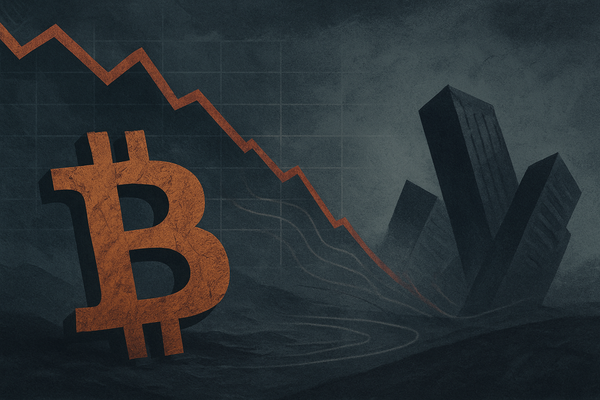The Rare-Earth Reckoning: America's Fight to Break China's Grip

The global rare-earth industry, a linchpin for everything from electric vehicles to advanced defense systems, is at a critical juncture as the United States intensifies its efforts to dismantle China's decades-long near-monopoly. Recent congressional testimony from key industry players, notably MP Materials, has underscored the urgency of the situation, revealing the profound national security and economic vulnerabilities stemming from an overreliance on a single foreign power for these vital minerals. This strategic competition is not merely about mining; it's a full-spectrum battle for control over an essential supply chain that will define the technological and geopolitical landscape of the 21st century.
The current landscape sees China controlling a staggering proportion of the rare-earth supply chain, from raw material extraction to advanced magnet manufacturing. This dominance has been meticulously built over 30 years through a calculated strategy of state-backed subsidies, predatory pricing, and strategic export controls, effectively stifling competition and consolidating Beijing's global influence. In response, the U.S. is now mobilizing a multi-pronged counter-strategy, involving significant domestic investments, international partnerships, and a renewed focus on regulatory reforms, all aimed at re-establishing a resilient and independent rare-earth supply chain.
Unpacking the Congressional Scrutiny and Strategic Response
The gravity of China's rare-earth dominance was laid bare during a historic hearing by the House Select Committee on the Strategic Competition Between the United States and the Chinese Communist Party. On [Date of Testimony - Assuming it's recent given the context, but the research didn't provide an exact date, so I'll keep it general], executives from leading critical minerals companies, including Matthew Sloustcher, Executive Vice President of Corporate Affairs at MP Materials (NYSE: MP), presented compelling testimony. Sloustcher and other witnesses detailed how China's deliberate strategy, characterized by aggressive state intervention and non-market tactics, systematically drove out U.S. competitors and led to widespread factory closures over the past three decades. This testimony painted a clear picture of a market intentionally distorted to favor Chinese entities, creating a significant dependency for the U.S. and its allies.
MP Materials, which operates the Mountain Pass mine in California – the only active rare-earth mining and processing facility in the United States – emerged as a central figure in America's rare-earth independence efforts. The company outlined its ambitious three-stage plan for vertical integration, aiming to move beyond simply producing rare-earth concentrate to full separation, refining, and ultimately, the manufacturing of permanent magnets. This includes the ongoing construction of the first U.S. rare-earth magnet manufacturing facility in Fort Worth, Texas, a crucial step towards creating a complete mine-to-magnet domestic supply chain. The company has secured significant support from the U.S. Department of Defense (DoD), which has become a major shareholder through a $400 million investment, part of a broader multibillion-dollar public-private partnership. This partnership includes long-term purchase commitments and price floor guarantees, designed to shield nascent domestic industries from China's historical practice of undercutting prices.
The congressional hearing revealed a rare bipartisan consensus: the need for urgent and decisive action. Lawmakers emphasized several key strategies: streamlining the notoriously lengthy permitting processes for new mining and processing projects, implementing robust measures to counter China's predatory pricing strategies, and fostering public-private partnerships to rebuild domestic refining and manufacturing capabilities. While MP Materials' efforts were widely lauded, some congressional scrutiny also focused on the potential risks of over-reliance on a single domestic producer, the economic viability of extracting heavy rare-earth elements at Mountain Pass, and the need for greater transparency in commercial agreements. The overarching message was unambiguous: the window of opportunity to secure critical mineral supply chains is rapidly closing, demanding a coordinated and aggressive response.
Companies on the Cusp: Winners and Losers in the Rare-Earth Race
The unfolding rare-earth saga presents a clear delineation of potential winners and losers, with significant implications for public companies operating in this critical sector. At the forefront of the potential winners is MP Materials (NYSE: MP). As the only integrated rare-earth mining and processing operation in the U.S., the company is uniquely positioned to capitalize on the governmental push for domestic supply chain security. Its strategic partnerships with the DoD, long-term offtake agreements with major commercial customers like General Motors (NYSE: GM) and Apple (NASDAQ: AAPL), and its ambitious vertical integration plan from mine to magnet manufacturing, all point towards substantial growth. The government's investment and price floor guarantees provide a crucial buffer against market volatility and Chinese predatory practices, creating a more stable environment for MP Materials' expansion. Furthermore, its recent joint venture with the Saudi Arabian Mining Company (Maaden) to develop a rare-earth refinery further diversifies non-Chinese supply, bolstering its strategic importance.
Beyond MP Materials, other companies involved in critical minerals exploration, extraction, and processing outside of China stand to benefit. These include junior mining companies in allied nations like Australia, Canada, and various African countries, which could see increased investment and demand for their raw materials. Companies developing innovative, environmentally friendly processing technologies for rare earths also represent potential winners, as the U.S. and its allies seek to establish a cleaner and more sustainable supply chain. Conversely, companies heavily reliant on Chinese rare-earth imports, particularly those in magnet manufacturing or industries requiring advanced rare-earth components, face increased supply chain risks, potential price volatility, and geopolitical pressure. While the immediate impact on their stock prices might be muted, the long-term strategic shift away from China could force costly reconfigurations of their supply networks.
The broader implications extend to sectors like electric vehicles, renewable energy, and defense. Automakers like General Motors (NYSE: GM) and Tesla (NASDAQ: TSLA), along with wind turbine manufacturers and defense contractors, are acutely aware of their reliance on rare earths for key components. By investing in or partnering with companies like MP Materials, they are not only securing their future supply but also demonstrating a commitment to national security and supply chain resilience, which can enhance their market perception and long-term stability. The shift towards a diversified rare-earth supply chain could also spur innovation in material science, leading to the development of alternative materials or more efficient rare-earth utilization, impacting a wide array of industrial players.
The Geopolitical Chessboard and Broader Industry Trends
The rare-earth competition is a microcosm of a larger geopolitical struggle, fitting squarely into broader industry trends of supply chain de-risking and strategic decoupling. China's control over these critical minerals grants it immense leverage, which Beijing has shown a willingness to weaponize through export controls, as seen in past disputes. This aligns with a global trend where nations are increasingly viewing critical minerals not just as economic commodities but as instruments of national power and security. The U.S. response is part of a wider effort to strengthen economic sovereignty and reduce vulnerabilities across various strategic sectors, including semiconductors, pharmaceuticals, and renewable energy components.
The potential ripple effects are substantial. For competitors and partners, the push for diversified supply chains creates both challenges and opportunities. Allies like Australia, Japan, and Canada are actively collaborating with the U.S. to develop their own rare-earth capabilities, forming a united front against China's dominance. This could lead to a re-alignment of global trade flows for rare earths, with new processing hubs emerging outside of China. Regulatory and policy implications are profound, with governments worldwide exploring incentives for domestic production, expedited permitting processes, and potentially even trade measures to counter unfair competition. The U.S. is likely to continue leveraging the Defense Production Act and other legislative tools to accelerate domestic rare-earth projects.
Historically, this situation draws parallels to past resource nationalism and strategic commodity races, such as the competition for oil in the 20th century. However, the unique properties of rare earths, their pervasive use in modern technology, and the environmental challenges associated with their extraction and processing add new layers of complexity. China's 30-year strategy of state-backed subsidies and predatory pricing serves as a stark historical precedent of how a nation can achieve strategic dominance through non-market means. The current U.S. counter-strategy represents a concerted effort to learn from these historical lessons and avoid future dependencies, aiming to build a more resilient and geographically diversified rare-earth ecosystem.
Charting the Path Forward: Opportunities and Challenges
Looking ahead, the rare-earth landscape will likely see a period of intense competition and strategic maneuverings. In the short term, the U.S. government will likely double down on efforts to streamline permitting for new domestic mining and processing projects, while also exploring mechanisms to protect nascent industries from China's potential for renewed predatory pricing. This could involve strategic stockpiling or even establishing price floors for domestically produced rare earths. Companies like MP Materials will focus on accelerating their vertical integration plans, aiming to bring their magnet manufacturing facilities online and secure additional long-term contracts. The market will closely watch for any new government contracts or legislative support for the critical minerals sector.
In the long term, the goal is to establish a robust, end-to-end rare-earth supply chain outside of China, encompassing mining, separation, refining, and magnet production. This will require sustained investment, technological innovation, and strong international alliances. Potential strategic pivots include greater emphasis on recycling rare earths from end-of-life products, which could reduce reliance on new mining, and continued research into alternative materials that could lessen the demand for some rare-earth elements. Market opportunities will emerge for companies specializing in advanced processing technologies, environmental remediation for mining sites, and magnet manufacturing. Challenges will include the high capital costs associated with building new facilities, the lengthy timelines for project development, and the ongoing need to compete with China's established infrastructure and lower production costs.
Several scenarios could unfold. In an optimistic scenario, the U.S. and its allies successfully build out a diversified and resilient rare-earth supply chain, significantly reducing reliance on China and fostering a more balanced global market. This would lead to increased stability for critical industries and enhanced national security. A more pessimistic scenario could see China maintain its dominance, potentially through technological advancements or by further weaponizing its supply chain, hindering the U.S. and its allies' ability to compete effectively. A middle-ground scenario involves a fragmented market, with regional supply chains emerging but global competition remaining intense. Investors should closely monitor governmental policy shifts, technological breakthroughs in rare-earth processing and alternatives, and the progress of key domestic players like MP Materials.
A New Era for Critical Minerals: Lasting Impact and Investor Watchpoints
The current push to counter China's rare-earth dominance marks a pivotal moment in global economics and geopolitics. The key takeaway is a fundamental shift in how nations perceive and secure their critical mineral supply chains. The era of assuming open and unfettered access to essential resources is over, replaced by a strategic imperative to build resilience and reduce vulnerabilities. The U.S. is no longer merely reacting but actively shaping a new future for rare earths, driven by national security concerns and economic independence.
Moving forward, the market will likely be characterized by increased volatility and strategic investments in the critical minerals sector. While the path to independence will be long and arduous, the concerted efforts by the U.S. government and companies like MP Materials signal a significant commitment to this goal. The lasting impact will be a more diversified global rare-earth supply chain, albeit one that may be more costly and complex to navigate in the short term. This rebalancing will undoubtedly influence technological development, industrial policy, and international relations for decades to come.
Investors should pay close attention to several key indicators in the coming months. These include further legislative actions or executive orders related to critical minerals, the progress of MP Materials' (NYSE: MP) magnet manufacturing facility, new partnerships or investments in rare-earth processing technologies, and any shifts in China's rare-earth export policies. The long-term winners will likely be those companies and nations that can demonstrate consistent progress in establishing secure, sustainable, and economically viable rare-earth supply chains outside of China. The rare-earth reckoning is upon us, and its outcomes will reverberate across global markets.
This content is intended for informational purposes only and is not financial advice



